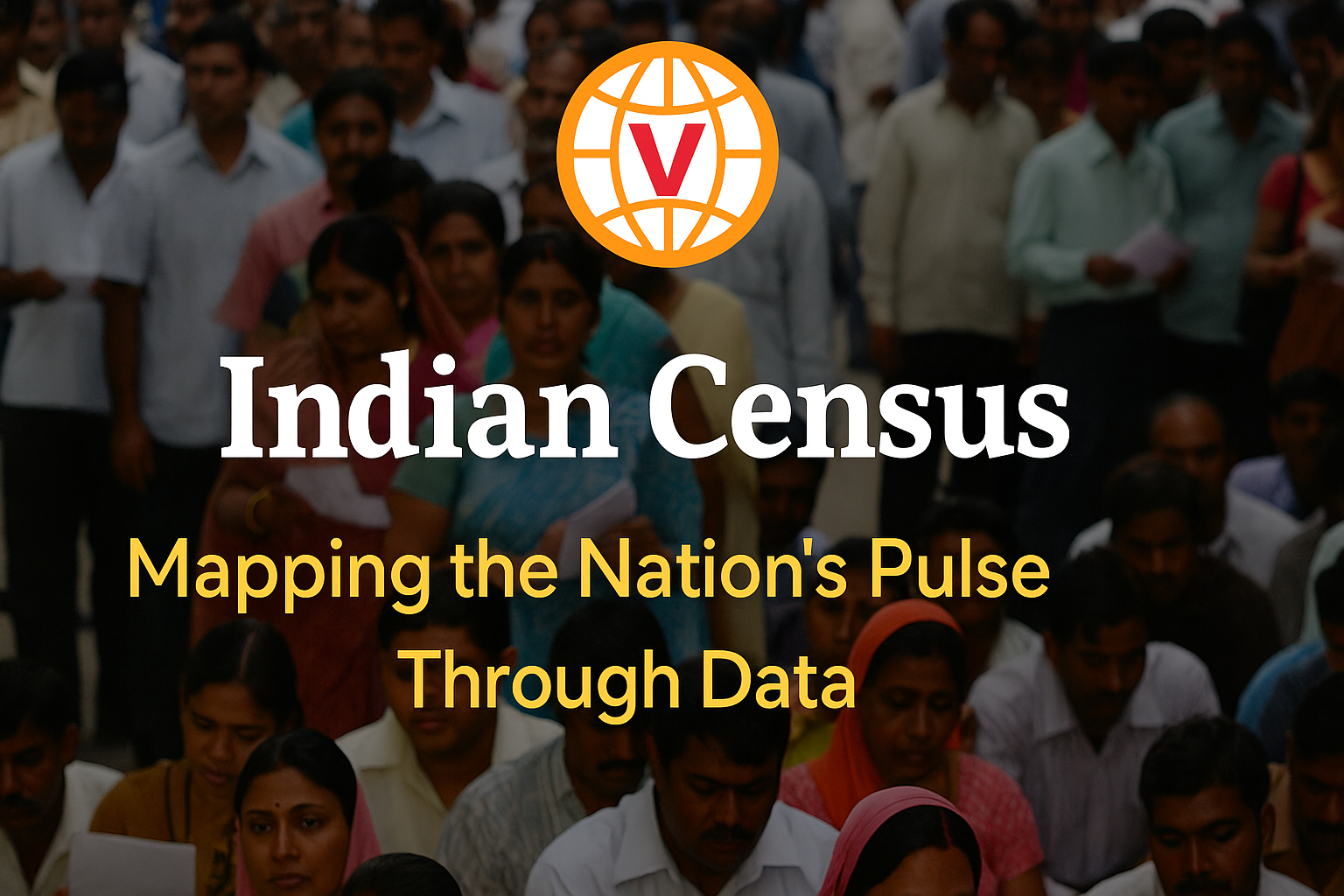Indian Census: Mapping the Nation’s Pulse Through Data
Introduction
The Indian Census is one of the largest and most detailed administrative exercises in the world. Conducted every ten years by the Office of the Registrar General and Census Commissioner, India, under the Ministry of Home Affairs, it provides crucial data on the country’s demographic, social, and economic landscape. From policy-making to resource allocation, the census is the backbone of India’s developmental planning.
What is the Indian Census?
The Census of India is a decennial process that collects, compiles, analyzes, and disseminates information about the population of the country. It includes data on:
Population size and growth
Literacy rates
Gender composition
Employment status
Housing conditions
Migration patterns
Languages and religions
The first complete census in India was conducted in 1881, and it has been carried out every 10 years since then, with the last census conducted in 2011.
Objectives of the Indian Census
The primary aims of the Indian Census are:
To provide a comprehensive demographic database for the entire country
To assist in formulation of government policies
To facilitate planning and development in areas like healthcare, education, employment, and infrastructure
To help in delimitation of constituencies for elections
To support allocation of resources and funds at national, state, and local levels
How is the Census Conducted in India?
The Indian Census is carried out in two major phases:
1. House Listing and Housing Census
Lists all buildings and structures
Records housing characteristics, amenities, and assets
2. Population Enumeration
Individual-level data collection on age, sex, religion, caste, literacy, marital status, occupation, etc.
Data is collected manually by trained enumerators who visit each household. The census also involves digital transformation efforts for quicker processing and accuracy.
Key Features of the Indian Census 2011
Total Population: 1.21 billion
Literacy Rate: 74.04%
Sex Ratio: 943 females per 1000 males
Decadal Growth Rate: 17.64%
Urban Population: 31.16%
Census 2021: Digital and Delayed
The Census 2021 was planned as India’s first digital census, with mobile apps and self-enumeration features. However, it has been delayed due to the COVID-19 pandemic and other administrative constraints.
Expected enhancements in Census 2021:
Use of mobile applications for data entry
Real-time monitoring of enumeration progress
Integration of Aadhaar and other government databases
Collection of data on transgender population, internet usage, and migration due to employment
Importance of the Indian Census
Policy Planning: Provides data to frame policies related to health, education, urbanization, and employment.
Resource Allocation: Determines how resources and services are distributed across states and sectors.
Governance: Supports better governance by helping in constituency delimitation and reservation policies.
Social Inclusion: Helps identify underprivileged groups needing focused development efforts.
Challenges in Conducting Census in India
Large population and geographical diversity
Language and literacy barriers
Migration and urbanization trends
Technology adoption and digital divide
Ensuring data privacy and security
Despite these challenges, the Indian Census has remained a globally respected operation due to its scale, precision, and impact.
FAQs on Indian Census
Q1. Who conducts the Indian Census?
The Census is conducted by the Registrar General and Census Commissioner, India, under the Ministry of Home Affairs.
Q2. How often is the Indian Census conducted?
The census is conducted every 10 years. The last one was in 2011 and the next, Census 2021, is pending.
Q3. Why is the Indian Census important?
It helps in policy formulation, resource distribution, governance, and developmental planning.
Q4. What is the difference between House Listing and Population Enumeration?
House listing records details of all buildings and their usage, while population enumeration records demographic details of individuals.
Q5. What’s new in Census 2021?
Census 2021 is expected to be India’s first digital census, with features like mobile-based data entry and self-enumeration.
Conclusion
The Indian Census is not just a population count—it is the foundation of evidence-based governance in the country. As India continues to evolve socially and economically, a timely and technologically advanced census becomes all the more critical. With its unique scale and reach, the census continues to shape the nation’s development roadmap by providing accurate and inclusive data for all.






